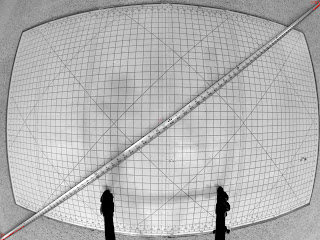More Icosahedral Models
A few years ago, I converted various planet maps to icosahedral models. You can print these out, cut along the solid lines, fold along the dotted lines, and have a nice icosahedron to play with. Since then, two more robot spacecraft have created global maps of planetary bodies. Most recently, the New Horizons spacecraft flew past Pluto. Here is an icosahedral projection of the data we have so far:
Also fairly recently, the Dawn spacecraft has orbited both Vesta and Ceres, two of the largest asteroids (or "dwarf planets" as the new nomenclature has it) in the Solar System. Here are icosahedral projections of those two. First, Vesta:
Next, Ceres - note the mysterious white spots toward the upper right:
All of the data used to create these projections was taken from Steve Albers' Planetary Maps Page, which I highly recommend.
Edit: A PDF file of helpful hints on assembling these can be found here.
Also fairly recently, the Dawn spacecraft has orbited both Vesta and Ceres, two of the largest asteroids (or "dwarf planets" as the new nomenclature has it) in the Solar System. Here are icosahedral projections of those two. First, Vesta:
Next, Ceres - note the mysterious white spots toward the upper right:
All of the data used to create these projections was taken from Steve Albers' Planetary Maps Page, which I highly recommend.
Edit: A PDF file of helpful hints on assembling these can be found here.




Comments